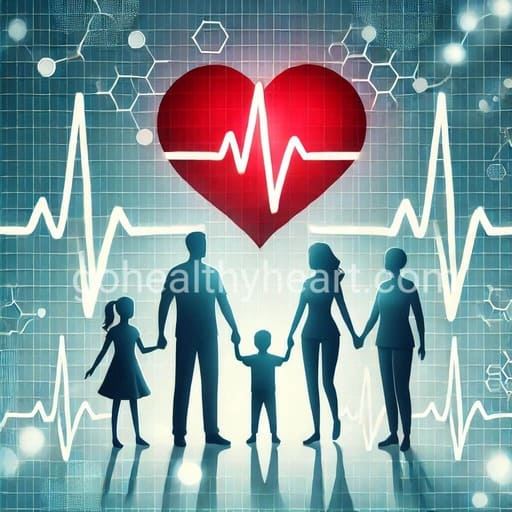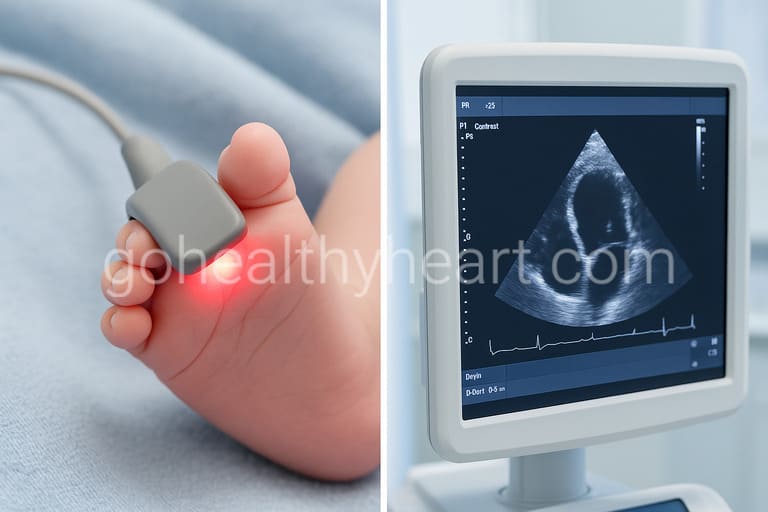Signs of Heart Problems in Babies: 7 Red Flags You Can’t Ignore

As a parent, it’s natural to worry about your baby’s health. But when it comes to something as critical as heart problems in babies, the fear can be overwhelming. How can you tell if something is wrong with your baby’s heart? The good news is that there are clear signs that might indicate a heart issue, and knowing them can help you seek the right care early.
Heart problems in babies are actually one of the most common congenital issues, affecting roughly 1 in every 100 babies. While that statistic might sound scary, many heart problems are treatable, especially when detected early. In this article, we’ll break down key signs that may indicate your baby has a heart problem, and what you can do if you’re concerned.
What Are the Most Common Signs of a Heart Problem in Babies?
Parents often wonder what specific symptoms they should be looking for. While some heart problems in babies may not be immediately obvious, others come with clear signs that something’s not right. Here are seven of the most common indicators of a heart issue in infants:
Rapid breathing: Babies with heart problems often breathe faster than usual, especially during feeding or crying. If your baby seems to be breathing hard or using their belly muscles to breathe, it could be a sign.
Bluish tint to the skin (cyanosis): If your baby’s skin, lips, or fingernails take on a bluish hue, this could mean their blood isn’t getting enough oxygen, which may indicate a heart issue.
Poor weight gain: Babies with heart problems sometimes struggle to gain weight, as their bodies use more energy than usual, especially while feeding.
Excessive sweating: If your baby sweats a lot, especially during feeding, it may be a sign that their heart is working harder than it should.
Fatigue or lethargy: Does your baby seem unusually tired or unable to feed for long periods? Heart issues can make babies fatigued easily, even during something as routine as breastfeeding.
Swelling: Puffiness or swelling in areas like the legs, abdomen, or around the eyes can sometimes be linked to heart problems.
Irritability or difficulty calming down: Babies who have a heart condition may be harder to comfort due to discomfort or fatigue.
Understanding Cyanosis in Infants: What Does It Mean?
Seeing a bluish tint on your baby’s skin can be terrifying. This condition, called cyanosis, happens when there isn’t enough oxygen in the blood. While a baby’s skin tone might vary, especially in the first few days after birth, persistent cyanosis could indicate a heart problem.
So how do you know when to worry? Look for cyanosis when your baby is feeding, crying, or exerting themselves. If the blue tint doesn’t go away or if it gets worse, it’s time to call the doctor. Pulse oximetry, a test that measures oxygen levels in the blood, can quickly assess if there’s a problem.
How Breathing Patterns Can Signal a Heart Condition in babies
All babies breathe fast compared to adults, but when breathing becomes labored or rapid for extended periods, it could indicate a heart issue. Babies with heart problems often have difficulty catching their breath, especially when feeding. You may also notice:
Nasal flaring: When babies struggle to breathe, they may flare their nostrils.
Grunting: If your baby makes a grunting sound with each breath, that can be a sign of respiratory distress.
Retractions: Check if your baby’s chest pulls in under the ribcage when they breathe; this is a sign they’re working too hard to breathe.
If you observe these symptoms, consult your pediatrician as soon as possible.
Feeding Difficulties and Poor Weight Gain: Could It Be a Heart issue for my baby?
Babies with heart problems often struggle with feeding. It takes a lot of energy for them to suck, swallow, and breathe at the same time. If your baby is not gaining weight despite regular feeding, or if feeding sessions seem exhausting, it could be a sign of a heart issue.
Here’s what you can do:
Keep a feeding diary to track how much your baby eats and for how long.
Watch for excessive sweating during feeding.
Monitor your baby’s weight gain at every doctor’s appointment.
Babies with heart issues often fail to thrive because their bodies are using too much energy just to maintain basic functions. If you notice slow or minimal weight gain, speak to your healthcare provider.
When Should You See a Pediatric Cardiologist?
So when should you take that next step and see a specialist? If your baby shows any of the symptoms mentioned—particularly rapid breathing, cyanosis, poor weight gain, or swelling—it’s time to see a pediatric cardiologist. Specialists can perform specific tests like:
Echocardiograms (an ultrasound of the heart)
Electrocardiograms (EKG)
Pulse oximetry to measure oxygen levels
The earlier you detect a heart problem, the better the chances of successful treatment. If your pediatrician suspects an issue, don’t delay. Early intervention is key.
Can Heart Problems in Babies Be Treated or Managed?
Yes, many heart problems in babies can be treated! Treatment options range from medications to manage symptoms to surgery for more serious conditions. Advances in pediatric cardiology have greatly improved outcomes for babies with congenital heart defects. Sometimes, the heart can even repair itself as your baby grows.
In more severe cases, catheter-based interventions or open-heart surgery may be necessary, but these procedures are highly advanced and have excellent success rates. Babies born with heart defects often go on to live healthy, full lives with proper care and follow-up.
Conclusion
Knowing the signs of heart problems in babies can make a huge difference in your child’s health. If you notice any of the symptoms we’ve discussed—especially cyanosis, rapid breathing, or poor weight gain—trust your instincts and talk to your doctor. Early detection can lead to early treatment, and that can make all the difference for your baby’s heart.
If you have any concerns or would like to book an appointment with a pediatric cardiologist, reach out today. Your baby’s heart health is worth it!




2 thoughts on “Signs of Heart Problems in Babies: 7 Red Flags You Can’t Ignore”